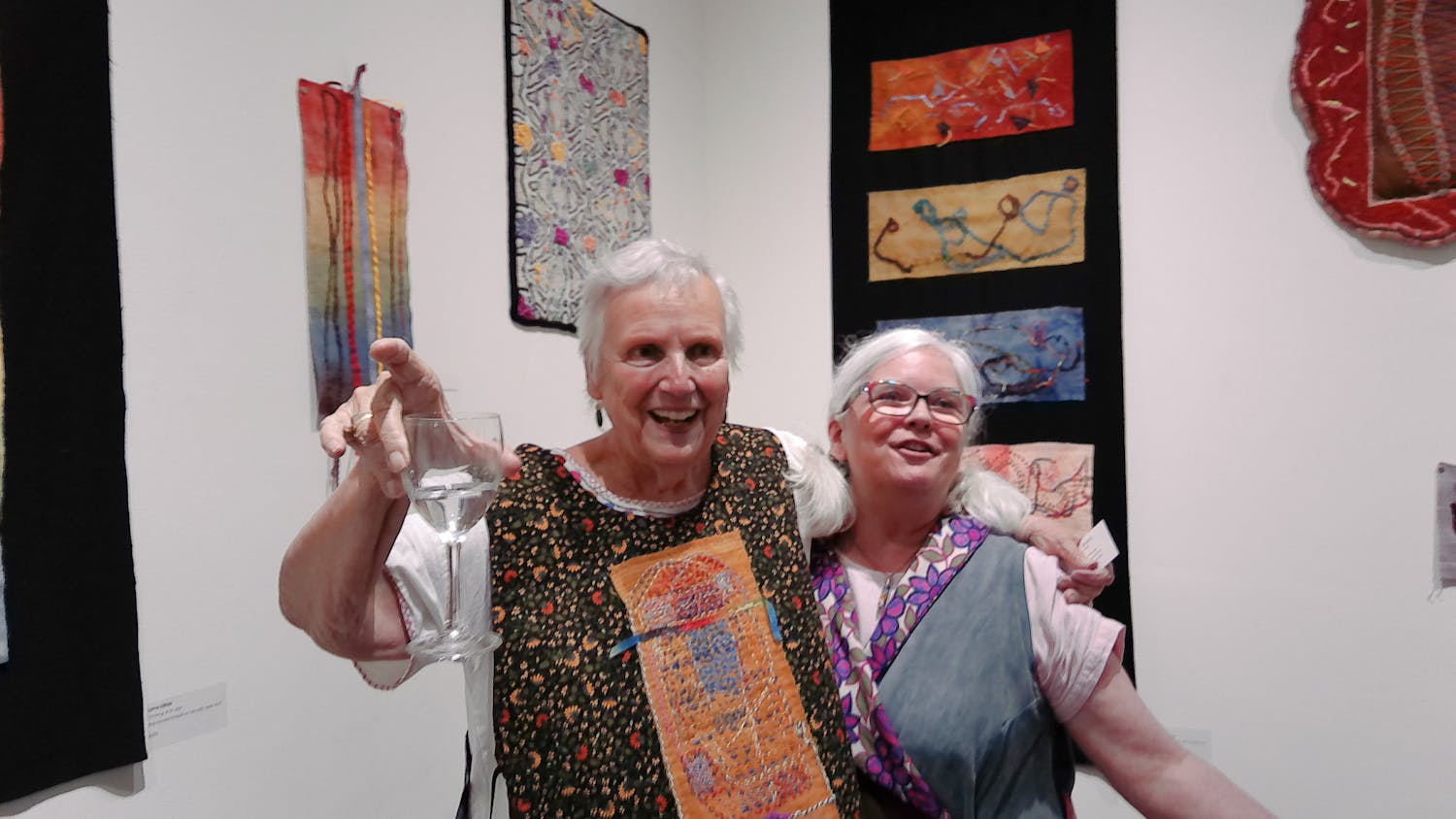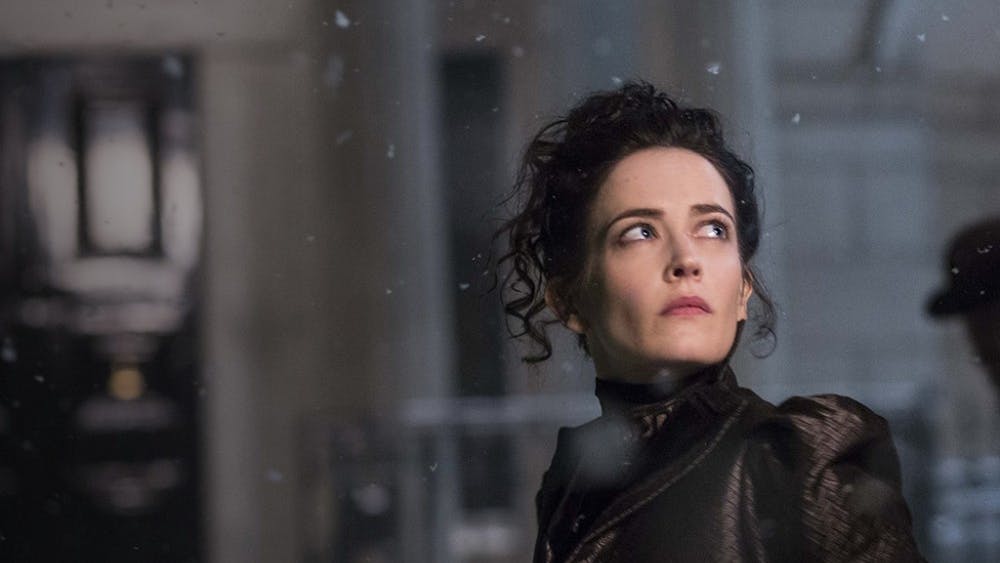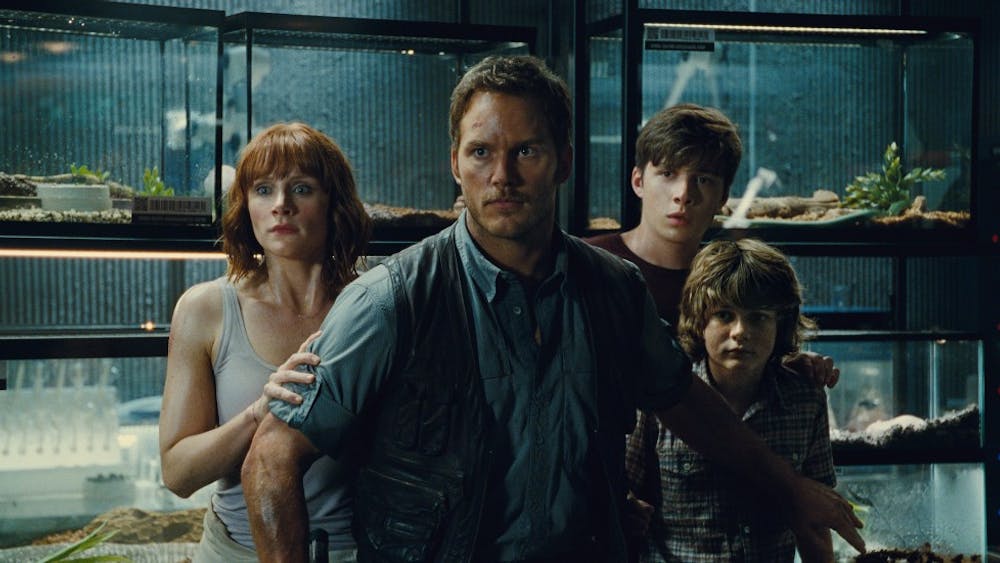You see them around campus wearing baggy sweatshirts and worn-in jeans. They look like everyone else. \nBut hidden behind the casual attire is the rhythm of Fred Astaire or the grace of Ginger Rogers yearning to get out on the dance floor.\nEven if you feel like you have two left feet, several IU organizations can get you started on the right foot.
IU International Folk dancers\nIn contrast with the pop, hip-hop and rap culture that our society has seemed to so easily conform to, folk dancing takes a different approach to movement. Created by elements of other dance forms containing different rhythms and sequences, folk dancing mainly revolves around line dances, circle dances and sometimes couple dances. Incorporating such cultures as Serbian, Macedonian, Balkan, Hungarian, Israeli and Scandinavian, special music and techniques bring worldwide tradition to the dance floor. \nAl Ruesink, organizer of the IU International Folkdance Club, says folk dancing contains various rhythmic moves. \n"It's mainly a sequence of foot and hand movements that go on for some length," Ruesink says. Ruesink and his wife, Kathy, come together to provide such a great club to students, faculty and residents, drawing an average of 15 to 40 individuals, ranging from the ages of 5 to 85, every Friday night in the Indiana Memorial Union. \n"There's a pretty big mix of people," Ruesink says. "It's an opportunity for graduate students, undergraduates, faculty and staff, and non-University residents to come together and dance."\nRuesink became involved with folk dancing when Kathy signed them both up during his sabbatical leave from Stanford University in the 1970s.\n"(Kathy) came home and said, 'I signed myself up for folk dancing lessons. You can come if you want, or you can stay home,'" Ruesink says. "So I went and I've been doing it since."\nSarah Reiter, a sophomore and frequent folkdance teacher for the club, provides an alternative perspective to folk dancing. Reiter says she considers folk dancing to be a family affair as she has been folk dancing and listening to the music for quite some time.\n"The music isn't as soft to the ear for most people because they're not used to it," Reiter says, "but it really is beautiful music. It really is."\nDuring the years, folk dancing has become modernized and Americanized to blend traditional beats and styles with American influence.\n"It is a more free-form style of dancing now than the traditional stuff," Reiter adds.\nAlthough folk dancing enables dancers to combine rhythm and movement with a group, slight misconceptions still remain intact when discussing the rise of the folk dancing trend.\n"When I talk to people about how I do folk dancing, they think I'm doing a polka," Reiter says. "But most people aren't really exposed to folk dancing so they don't really know."\nAnother misconception is that folk dancing is difficult to learn.\n"People think it's really hard, and it's not. It's easy," she says.\nFolk dancing was originally picked up in native villages and brought to the United States as an ethnic form of dancing.\n"When I do a different dance, it's like you're coming into a different village," Reiter says. "I think it's important to experience the different cultures and it's a lot of fun (as well)."
Ballroom Dance Club\nCounting beats and elegantly moving in circles to an organized beat is the main scene on the floor when ballroom dancing. \nTraditionally man leading woman, ballroom dancing provides for partnership communication, and Robin Mock, Ballroom Dance Club president, says ballroom dancing is a great creative outlet. \n"It provides for a social atmosphere, more activity, it can easily be fit into your schedule," Mock says. "It can basically be as time consuming as you make it or want it to be."\nMock says there are two forms of ballroom dancing, Standard and Latin. Standard ballroom dancing involves the woman wearing long, flowing dresses, and contains such forms as the waltz, fox trot, tango and the quickstep. With Latin ballroom dancing, women wear either a sparkly, flashy top, short skirt or a cocktail dress. Latin dances include the cha cha, rumba and the samba. \n"The goal is to move around in a circle," Mock says. "And the idea is to draw attention from the judges, have them focus on technique and style, just basically be seen by (them)."\nLike most forms of dancing, ballroom dancing has some misconceptions of its own. \n"When people think of ballroom dancing, they basically see grandparents doing these dances," Mock says. "They think it's boring with dorky music."\nBut what many don't realize is that ballroom dancing helps create solid partnership, amazing contact and "creates a beautiful picture across the floor," Mock adds.\nThe Ballroom Dance Club practices several times a week and competes about three to four times a semester at University of Illinois, Purdue and Ohio State.\nMock says that rhythm and experience are not necessary because both can be easily developed through dancing and practice.\n"Ballroom dancing has helped to shape me and the future years to come," Mock says. "It's a valuable trait to have compared to, say, ballet … due to social situations."
IU Swing Club\nBorn in Harlem, New York, and containing African-American roots, swing dancing resorts to jazz and swing music, completely fulfilling American origin, heritage and tradition. It is divided into two forms -- East Coast swing dancing, consisting of a six-count basic, and the Lindyhop swing dancing, consisting of the older, more authentic 1930s eight-count style. \nRobert Downey, swing club instructor, says he began his swing dancing "career" at the Bluebird Nightclub three years ago when he attended a performance by the Swing Rays, a then-popular swing dance band. Downey says he immediately became interested and took upon the IU Swing Club.\n"I like the music and the social atmosphere," Downey says. "It's just pure fun versus the formal aspects of say ballroom or folk dance."\nThe IU Swing Club consists of about 150 members who meet every Monday night at the Health, Physical Education and Recreation building. From 8 to 9 p.m. members receive lessons and then continue through the night until about 11 p.m. for open dance and practice.\n"It's a great way to meet new people, we all go out and dance," Downey says. "Membership is open to students, faculty, staff and the Bloomington community"





